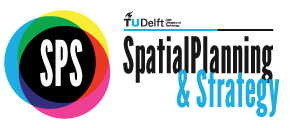Rio’s West Harbor Activation Plan
MSc. Rafael Saraiva
Rafael Saraiva is an associate of MLA+ Architecture, Planning and Consulting, responsible for the company’s operations in Latin America. He graduated from TU Delft in 2010 with the thesis entitled “Innovation Backbone: a new economic zone in Rio de Janeiro’s urban voids”, where he analysed the area that stretching from Rio’s harbour to the international airport, including the federal university campus. This area has an enormous amount of empty spaces that could be used to boost Rio’s economy by fostering innovative businesses.
“As part of Rio’s harbour revitalisation plan, our company’s proposal for redeveloping its western part as a hub for creative businesses was approved. The area is owned by Caixa Econômica (Brazil’s National Savings Bank) and the overall plan is implemented by the public-private agency CDURP.
While the harbor’s eastern part regeneration (the area closer to downtown) is mostly finished – with two new museums, events, and a number of buildings under construction – the harbor’s western part is still mostly empty, offering a number of opportunities for new uses.
The harbor plan was mostly thought as a real estate operation in which construction bonds issued by the PPP are financing the construction works: a tram line, public spaces, cultural venues, heritage renewal and the upgrading of sewerage and lighting systems.
With the economic downturn affecting the real estate and the petroleum sectors in Brazil, the later being, together with the Olympics, the major driving force of Rio’s economy, there was a need to rethink the harbor and reorient its strategy.
Because Rio is the Brazilian city with the highest percentage of economic activity in the creative sector (4% of its GDP, while the average in Brazil is 2,5%, according to Rio’s federation of industries – FIRJAN), the city can use this asset to reboost its economy. The harbor’s western part, with so many empty sheds, seems to be the ideal place to ignite the process.
Our plan is based on a deep analysis of the area which demonstrated that the western part of the harbor is not an easy task that could happen as a consequence of new museums. The plots are too big and the urban space unstructured. Composed by a number of actions tackling connectivity, environment and new programs, our plan aims to make the area lively in the short term.
To bring creative enterprises to the area, space will be offered at minimum costs, generating jobs and tax revenues. After that, new uses such as shops and residences are expected to flourish in remaining empty plots. Important to mention is that social housing developments are being studied for the area by community groups.”


